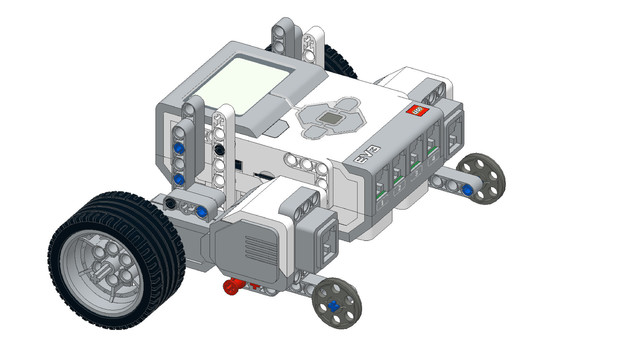Do your best as a teacher to make sure students are expanding their vocabulary on every occasion.
- #346
- 26 Jan 2017
- 1:53
Expanding vocabulary
Expanding students' vocabulary is an important part of the learning process.
It is unacceptable when after a few classes your students still say, "I need that blue thing or the red part".
Practice makes perfect
The teacher should encourage students to pronounce the names of the parts on every occasion.
This is easy when students ask you to give them some part from the set or ask you to help them find a piece in the set.
English
In this video as a teacher note, I would like to stop at why is it important for the students and for you as an instructor to make the students learn the different names of the different parts in the set.
Expanding the vocabulary of the student is very important in the learning process especially in classes that involve robotics because this is a new terminology for them. It is generally not acceptable and it's not acceptable for us after few classes your students to come to you and to say something like 'I need the blue thing or the blue part'. So that's not very acceptable. You as a teacher must make the student pronounce the names of the parts on every occasion. Usually, this is the moment when a student asks you to give them some part of the set, or ask you to help them find a piece in the set. Use these opportunities to make them pronounce and say the name of the different parts. We'll try to prepare a list with the names of the different parts that you can find below, attached in the material section. And have this list probably printed for you, or just open and try to learn the names of the different parts and also try to use each opportunity to make the students pronounce and say the names of the different parts.
Courses and lessons with this Tutorial
This Tutorial is used in the following courses and lessons

Robotics with LEGO - Level 1.0 - Adventure in Space
The first level of the Robotics with LEGO curriculum for students in fifth to twelfth grades.
Various constructions with robots are built. Learn how to control the motors so that the robot navigates around the Moon and Earth in various ways. Getting to know the first two sensors. The robot can feel its surroundings with the help of the Touch sensor and avoid obstacles.
The Ultrasonic distance sensor can help the robot avoid obstacles. Students work with concepts like loop, degrees and medium motor. Robots can now do two different actions at the same time - while solving missions on a field, the third motor clears detected obstacles.
- 126
- 123:52
- 150

EV3 Phi. Introduction to robotics with LEGO Mindstorms
The things that you will be able to do with your EV3 robot by the end of this course are:
Freely move your robot towards desired target;
Avoid obstacles on the path of your robot using sensors;
Follow lines of any shape;
Detecting and picking up objects of any kind;
- 92
- 220:20
- 36

Parts, components and notes about LEGO robot constructions
Overview of what is going to happen in module 3
- 7
- 0
- 1
- 3d_rotation 0

Level A1. Introduction. Robotics with LEGO
Introduction to robotics - The first level of the Robotics with LEGO curriculum for students in second, third or fourth grades. A journey in space, with robots. Various constructions with robots are built. Learn how to control the motors so that the robot navigates around the Sun, the Moon and Earth in various ways. Getting to know the first of the sensors. The robot can feel its surroundings with the help of the Touch sensor and avoid obstacles.
- 142
- 133:42
- 187

Lesson 2 - Yo-yo challenge
Introduction
Today we will learn to program the robot to perform more than just one action, as well as program it to move like a yo-yo. Have you ever played with a yo-yo? How does it move? Did you know that from Filipino yo-yo means "to return".

- 18
- 3
- 8
- 3d_rotation 1

Python with LEGO Mindstorms EV3 - Level 1
The course introduces students to the programming language Python. We use LEGO Mindstorms EV3 Robots. Python is a popular programming language. It could be used for introducing students to programming, for academic studies, for developing machine learning algorithms and as a general-purpose language.
During the course, students learn how to read and how to develop Python programs. They use an Integrated Development Environment called Visual Studio Code. Robots are programmed to perform interesting and funny tasks like "bringing you water". The level ends with competition on a playing field with boxes.
- 74
- 28:18
- 114